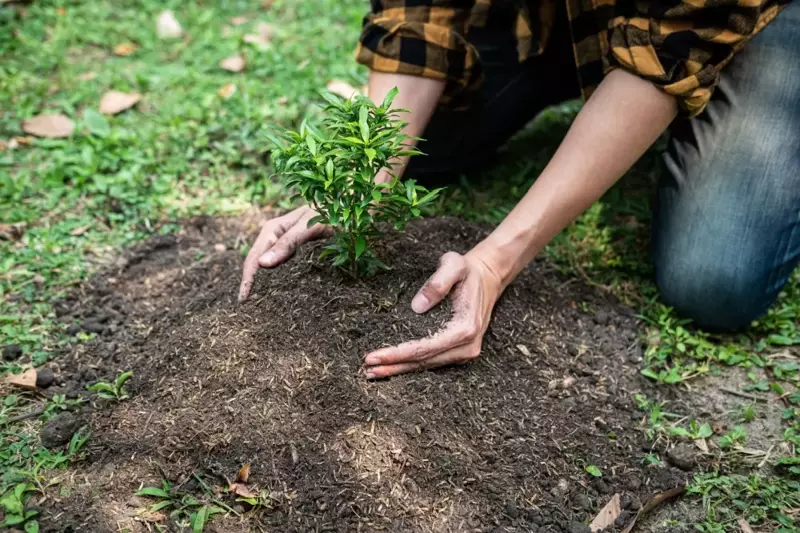Seasonal Gardening Tips: What to Plant and When for Ideal Results
Seasonal Gardening Tips: What to Plant and When for Ideal Results
Blog Article
The Comprehensive Guide to Horticulture: Discover the Benefits of Different Designs and Approaches
Gardening incorporates a varied array of designs and methods, each offering special advantages customized to specific choices and ecological contexts. From the organized sophistication of formal gardens to the organic charm of permaculture, understanding these variations is vital for cultivating a space that not only thrives yet additionally mirrors individual values and visual appeals. Furthermore, sustainable practices play an important role in enhancing neighborhood ecological communities and making sure long-lasting success. As we explore these various designs, it ends up being evident that the selections made can substantially influence both the garden's wellness and its contribution to the surrounding setting.
Comprehending Horticulture Basics
Understanding the fundamentals of gardening is important for growing a flourishing and lasting garden. An effective horticulture endeavor starts with a strong foundation of expertise concerning dirt, plant choice, and climate factors to consider. Healthy dirt is the keystone of any yard; it provides vital nutrients, water retention, and an environment for advantageous bacteria - Gardening. Examining soil pH and nutrient levels can lead amendments to enhance plant development.
Selecting the right plants is equally vital. Recognizing their specific needs-- such as sunlight, water, and spacing-- guarantees compatibility with the regional climate and soil conditions. This selection process ought to likewise think about the growth practices and lifecycle of plants, enabling for a balanced and aesthetically pleasing garden.
Furthermore, reliable watering practices are vital. Over-watering and under-watering can both result in plant tension and condition. Applying a routine based on seasonal adjustments and plant requirements can boost water performance.
Popular Horticulture Styles
What specifies the essence of preferred gardening designs? Amongst the most popular styles is the home garden, characterized by its casual design and a vibrant array of blossoms and vegetables.
Conversely, the official garden embodies proportion and order, often including geometric patterns and thoroughly trimmed bushes. This design interacts elegance and elegance, with very carefully picked plants that enhance an organized visual.
The Japanese yard offers a peaceful and meditative experience, making use of all-natural aspects like water, rocks, and plants to produce a tranquil environment. It focuses on simplicity and equilibrium, encouraging consideration.
In addition, xeriscaping has gotten appeal, particularly in dry areas (Gardening). It prioritizes drought-resistant plants and effective water usage, promoting sustainability while improving landscape elegance
Benefits of Container Gardening
Container horticulture offers a wide variety of advantages that make it an appealing option for both amateur and skilled garden enthusiasts alike. Among the key advantages is versatility; containers can be put in numerous areas, allowing gardeners to enhance sunshine direct exposure and create visually appealing plans. This flexibility makes it feasible to yard in spaces where conventional in-ground gardening may not be feasible, such as terraces, outdoor patios, or metropolitan settings.
In addition, container horticulture gives far better control over dirt problems. Garden enthusiasts can tailor the soil mix to suit particular plants, making sure ideal drain and nutrient schedule. This important link is specifically beneficial for individuals living in locations with inadequate or infected dirt.
Another substantial benefit is the lowered danger of bugs and diseases. Container plants can be checked much more easily, and any type of concerns can be dealt with immediately. Moreover, this approach can lessen the spread of intrusive types.
Sustainable Horticulture Practices
Lasting gardening practices are essential for promoting environmental wellness and improving biodiversity in our communities. These techniques prioritize eco-friendly balance, resource conservation, and making use of natural methods to lessen negative environmental effects. By using techniques such as composting, gardeners can lower waste while enriching soil health and wellness, therefore fostering a flourishing yard ecosystem.
Water conservation is one more essential aspect of sustainable gardening. Methods such as rain harvesting, drip watering, and the usage of drought-resistant plants can considerably lower water use while guaranteeing that plants get ample moisture. Additionally, incorporating indigenous plant species into garden layouts supports local wildlife and lowers the demand for chemical fertilizers and chemicals, which can be dangerous to the environment.

Ultimately, lasting horticulture practices not just contribute to healthier gardens yet additionally promote a more durable atmosphere, index supplying long-term benefits to both the gardener and the bordering area.
Tips for Effective Horticulture
To grow a thriving garden, garden enthusiasts should prioritize careful planning and thoughtful implementation of their horticulture strategies. Begin by evaluating the regional environment and dirt conditions, as these elements dramatically influence plant selection and development. Select plants that are fit to your atmosphere, considering indigenous species that will certainly love marginal intervention.
Carrying out a well-structured format is vital (Gardening). Make use of companion planting strategies to advertise biodiversity and all-natural insect control, look here while making certain each plant has sufficient area for development. This not just improves aesthetics yet also boosts total plant wellness
Regular maintenance is essential to an effective yard. Establish a regular schedule for watering, weeding, and feeding. Mulching can aid maintain moisture and subdue weeds, while likewise adding raw material to the soil.
Consistently checking plant health and wellness and development will certainly enable for prompt interventions. Be open to learning and adapting; gardening is a continual procedure that benefits from experience and testing.
Verdict


In summary, the expedition of diverse gardening designs and techniques reveals their complex advantages, contributing to both visual allure and environmental health. Container gardening uses versatility and availability, while sustainable methods enhance ecological stewardship. By integrating numerous techniques and methodologies, garden enthusiasts can optimize their initiatives, promote biodiversity, and develop functional exterior rooms. Eventually, this comprehensive overview acts as a useful resource for cultivating effective gardening experiences, cultivating a deeper connection with nature and the bordering community.
Report this page